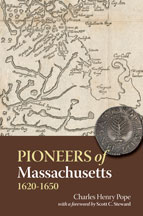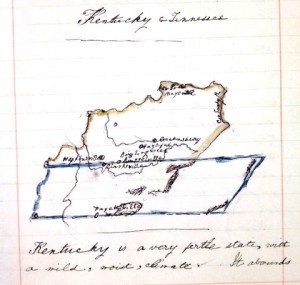 The Wing family of Cape Cod has had a great amount of genealogical information published about it over the years. Beginning with Rev. Conway P. Wing’s A Historical and Genealogical Register of John Wing, of Sandwich, Mass. And his Descendants, 1632-1888, the list includes Mary Elizabeth Sinnott’s Annals of the Sinnott, Rogers, Coffin, Corlies, Reeves, Bodine and Allied Families, published in 1905, in which Wing is one of the allied families; The Owl, a serial publication of the Wing Family Association from 1901 to the present, and most recently Raymond T. Wing’s 2006 version, Wing Genealogy, Volume 1, The Reverend John Wing of Banbury, Oxfordshire, England and his wife Deborah Bachiler, Their Ancestry and Descendants through Five Generations. Continue reading The Wings of a dilemma
The Wing family of Cape Cod has had a great amount of genealogical information published about it over the years. Beginning with Rev. Conway P. Wing’s A Historical and Genealogical Register of John Wing, of Sandwich, Mass. And his Descendants, 1632-1888, the list includes Mary Elizabeth Sinnott’s Annals of the Sinnott, Rogers, Coffin, Corlies, Reeves, Bodine and Allied Families, published in 1905, in which Wing is one of the allied families; The Owl, a serial publication of the Wing Family Association from 1901 to the present, and most recently Raymond T. Wing’s 2006 version, Wing Genealogy, Volume 1, The Reverend John Wing of Banbury, Oxfordshire, England and his wife Deborah Bachiler, Their Ancestry and Descendants through Five Generations. Continue reading The Wings of a dilemma
Tag Archives: Early New England Families Study Project
Great Migration resources
 On Wednesday, we took a look at the books that are part of the Great Migration Study Project, which are key resources for genealogists and for people researching their own early New England ancestors. Just where did Robert Charles Anderson find the data to undertake his massive project? NEHGS Editor-in-Chief Scott C. Steward notes that Anderson “mined earlier published and unpublished compilations for lists of immigrants to New England, tirelessly cross-checking them against the surviving colony, county, town, church, probate, and deed record to create living portraits of seventeenth-century New Englanders.” Continue reading Great Migration resources
On Wednesday, we took a look at the books that are part of the Great Migration Study Project, which are key resources for genealogists and for people researching their own early New England ancestors. Just where did Robert Charles Anderson find the data to undertake his massive project? NEHGS Editor-in-Chief Scott C. Steward notes that Anderson “mined earlier published and unpublished compilations for lists of immigrants to New England, tirelessly cross-checking them against the surviving colony, county, town, church, probate, and deed record to create living portraits of seventeenth-century New Englanders.” Continue reading Great Migration resources
The Mayflower Compact
 When one is associated with the Mayflower Society and other Pilgrim groups, it is almost inevitable that eventually one will be called upon to read the Mayflower Compact in public, and it was my duty to do so at the annual meeting of the Colonial Society of Massachusetts this year. The Mayflower Compact was written 394 years ago by a group of “forefathers” who found themselves sitting in a cold, wet ship in November in Cape Cod Bay. (They had thought they were going to land somewhere near the Hudson River, in what they called “Northern Virginia.”) Continue reading The Mayflower Compact
When one is associated with the Mayflower Society and other Pilgrim groups, it is almost inevitable that eventually one will be called upon to read the Mayflower Compact in public, and it was my duty to do so at the annual meeting of the Colonial Society of Massachusetts this year. The Mayflower Compact was written 394 years ago by a group of “forefathers” who found themselves sitting in a cold, wet ship in November in Cape Cod Bay. (They had thought they were going to land somewhere near the Hudson River, in what they called “Northern Virginia.”) Continue reading The Mayflower Compact
Two hundred posts on Vita Brevis

This post marks the two-hundredth entry on Vita Brevis since its début on January 10. After ten months and more than 250,000 page views, and with contributions from 52 bloggers (and counting), the blog has established itself as a place to stop in and see how other genealogists work. Not every post is germane to every reader’s interests, but in the main the spirit of inquiry animates each entry, offering guidance about what approaches and resources help us in our research. Continue reading Two hundred posts on Vita Brevis
How I became a genealogist: Part Three
 There was no light-bulb moment when I discovered I wanted to be a genealogist, but by the time I came back from Kentucky, I’d done enough work on my family’s genealogy to decide history wasn’t so dull after all. It happened that NEHGS was hiring an assistant editor for the Register. I applied, was offered the job, but had to turn it down because of the salary. Sorry, but I also needed to pay rent.
There was no light-bulb moment when I discovered I wanted to be a genealogist, but by the time I came back from Kentucky, I’d done enough work on my family’s genealogy to decide history wasn’t so dull after all. It happened that NEHGS was hiring an assistant editor for the Register. I applied, was offered the job, but had to turn it down because of the salary. Sorry, but I also needed to pay rent.
As Fate would have it, I was employed by Honeywell Information Systems where I was introduced to the first word processing computer – the IBM Mag Card Typewriter – and discovered that computerized gadgets were fun to operate. Continue reading How I became a genealogist: Part Three
Remember the ladies!
 Readers have asked for Early New England Families Study Project sketches for the ladies. Because genealogy is traditionally oriented to the male surname – and if a wife has only one husband – “reversing” his sketch for her would not include any more information. With 35,000 sketches to do, that is unneeded redundancy.
Readers have asked for Early New England Families Study Project sketches for the ladies. Because genealogy is traditionally oriented to the male surname – and if a wife has only one husband – “reversing” his sketch for her would not include any more information. With 35,000 sketches to do, that is unneeded redundancy.
However, there are exceptions to every rule. In the cases where a woman has married more than one husband and has children by both (or more), then her sketch will contain different information from her husbands’ sketches. Thus to completely cover a family, sketches are needed for the husbands and the wives who connect them. Three new sketches have been posted on the website for three of these wives and a fourth is in progress. It is quite interesting what a change of view can do for our understanding of what it was like to be a wife and mother in seventeenth-century New England. Continue reading Remember the ladies!
Cheat Sheets: Part Four
 The first fourteen steps in my process for creating entries for the Early New England Families Study Project are covered in three previous posts, beginning here:
The first fourteen steps in my process for creating entries for the Early New England Families Study Project are covered in three previous posts, beginning here:
15. Analysis. Many, many books have been written about genealogical analysis. I have just read the most recent, Bob Anderson’s Elements of Genealogical Analysis, and highly recommend it with one caveat – it is written by a left-brained genealogist. Speaking as a right-brained genealogist, I know some readers may find themselves grumbling about “overkill,” but remember that Bob is examining the process of genealogical analysis on the cellular level. Continue reading Cheat Sheets: Part Four
Cheat Sheets: Part Three
 The first nine steps in my process for creating entries for the Early New England Families Study Project are covered here and here.
The first nine steps in my process for creating entries for the Early New England Families Study Project are covered here and here.
10. Town Histories, Genealogical Dictionaries, Town Records (Town). I can access almost any classic published history on-line, many of which include genealogical sections, as well as standard “dictionaries” of families associated with a town, such as Bond’s Watertown and Wyman’s Charlestown Genealogies. An essential regional source not available online (but available as a reprint from NEHGS) is Genealogical Dictionary of Maine and New Hampshire. Published records of a town – other than vital records – such as Jeremy Bangs’ records for Sandwich (mentioned in an earlier post), also fall into this category. Continue reading Cheat Sheets: Part Three
Cheat Sheets: Part Two
 In a recent post I mentioned the Early New England Families Study Project “template” that I use: a Word document file with the categories pre-typed. I keep it on my desktop to open and “save as” the new file name each time I start a new family. For those of you who are knowledgeable about Word template files, you can set it up as such. As I do the research, I dump all the raw material into the form, then whittle it down as I proof, compare, and refine the text. Continue reading Cheat Sheets: Part Two
In a recent post I mentioned the Early New England Families Study Project “template” that I use: a Word document file with the categories pre-typed. I keep it on my desktop to open and “save as” the new file name each time I start a new family. For those of you who are knowledgeable about Word template files, you can set it up as such. As I do the research, I dump all the raw material into the form, then whittle it down as I proof, compare, and refine the text. Continue reading Cheat Sheets: Part Two
Naming a child born out of wedlock

I was recently asked a question about how surnames were assigned to illegitimate children born in the seventeenth century: Was the surname of the father, or the mother, given to the child? Since illegitimate births were uncommon in New England during the 1600s (about 92% of first children born through 1680 were delivered nine months or more after their parents’ marriage), the illegitimate child could have been given the surname of the mother OR the father, depending on the circumstances. Continue reading Naming a child born out of wedlock